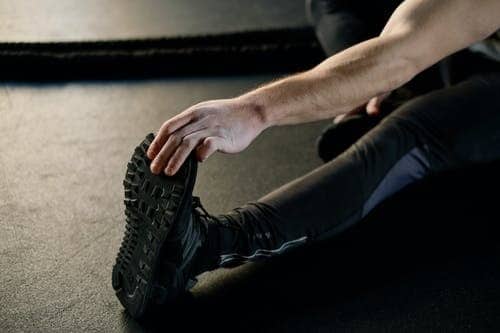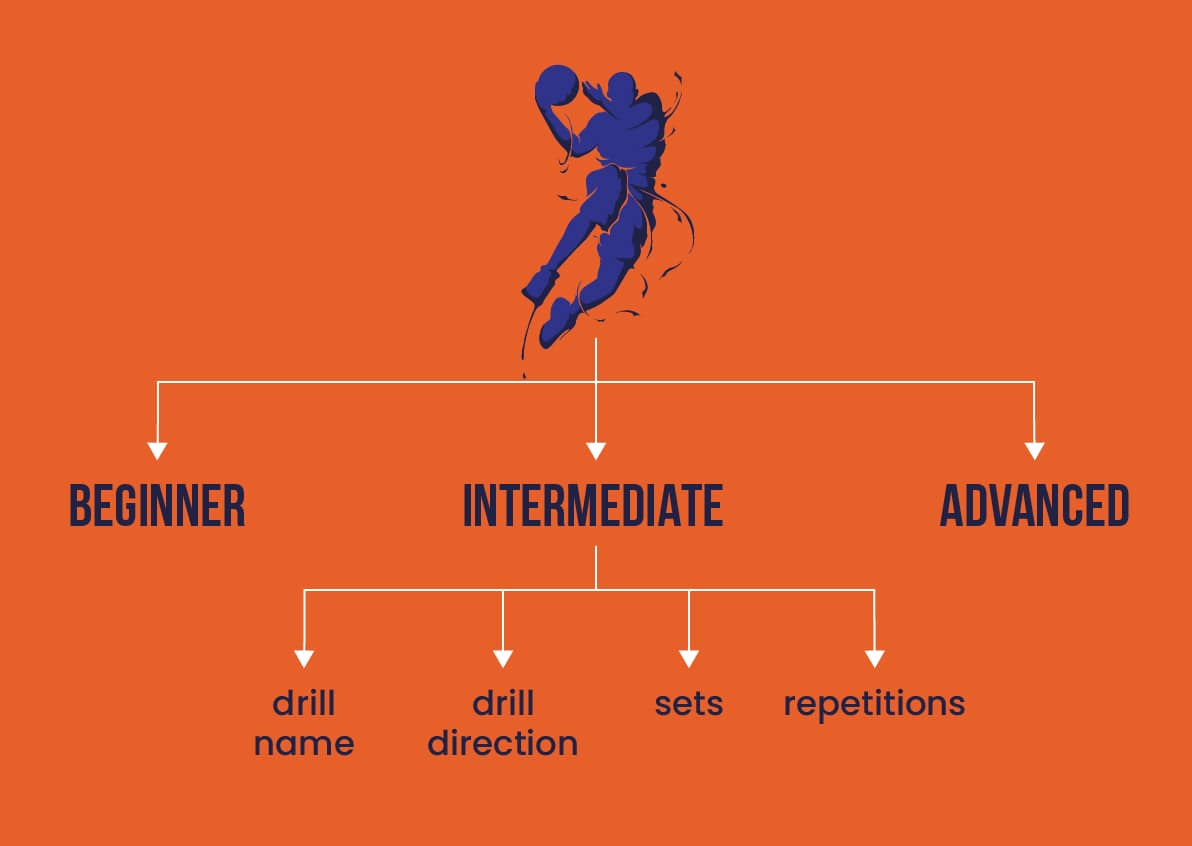
The capacity to produce explosive power in the legs is a prerequisite for success in most sports; not just those where extensive jumping is required.
Likewise, the production of that power is heavily reliant on your capacity to use strength quickly and efficiently, through the legs.
After years of study there is overwhelming evidence that the inclusion of plyometrics in your training regimen is the most effective way to increase power in your legs.
When you strip it down to the nuts and bolts of how plyometrics help you get there, you will also quickly discover there is overwhelming evidence that plyometrics exercises are also the most effective way to increase speed in your legs.
In the above paragraphs we have addressed the effect of plyometrics on power and speed but equally important is your capacity to produce that power and speed efficiently. On that score, there is also overwhelming evidence that plyometrics is the most effective way to improve your agility, regardless of the code you are competing in.
The twelve exercises we have included in this post will increase power, speed and agility in your lower limbs.
how to utilize this list:
You need to perform these plyometrics exercises three times a week, for a period of eight weeks. You will actually start seeing some tangible results before that but complete the regimen for optimal results.
In between training sessions, it is also incumbent upon you to allow your body 48 hours to recover.
12 Plyometric Leg Workout Exercises

- Beginner Exercises
1-
Drill Name: Explosive Step Up
If you are a track and field athlete, you will notice almost immediately that this exercise actually mimics the motion that you would complete when accelerating during a sprint or even middle distance race. We cannot overstate the value of performing explosive drills that train the muscles to remember what they should do while in the heat of competition, because you simply don’t have the time to think about these things.
You should perform an Explosive Step Up to increase your overall leg strength. As the name also suggests, this set of workouts will also increase the explosive power in your legs, by helping you increase your velocity and speed during the jump motion.
Reps: 25 Reps per Set
Sets: 3 Sets per session
Rest: Take a 40-second break between Sets
2-
Drill Name: Jumping Spider
When you perform this drill - or any of its variations - you produce a solid workout for the hamstrings, glutes, quads and abductors.
However, it is also worth noting that as a secondary function these exercises will also be of benefit to the chest, arms, shoulders and abdominal core. It is also outstanding training for the hip flexors too.
Reps: 10-15 Reps
Sets: 3-4 Sets
Rest: 40 Seconds
3-
Drill Name: Frog Hops
You perform frog hops to increase strength in the outer thighs and the quads, primarily. It is also a secondary workout for the calves, hamstrings and glutes. What is interesting about this workout is what it can do for increased strength in the groin and hip flexors, which do not always enjoy the limelight during jump training regimens.
Once again you are looking at a drill that will equip you well, regardless of the code that you are competing in. Basketball Plyometrics attract a lot of attention on these pages but you will be amazed by the results this drill can produce for those competing in things like the martial arts.
Reps: 15 Reps per Set
Sets: 3 Sets per Session
Rest: Give yourself a 90-second break between Sets when completing this workout.
4-
Drill Name: Single-Leg Deadlift HopsThe primary beneficiary of this workout is the hip flexor, where you will do a series of hinges for the duration of the drill.
However, the drill is also likely to give you outstanding results if it is a better balance that you seek while completing the jump motion. Achieving that balance invariably puts additional demands on your glutes. Once again, we are looking at a drill that equips you well for a series of sports codes, not just basketball and volleyball.
Reps: 20 Reps per Set
Sets: 4 Sets per workout session
Rest: Rest for 60 seconds between Sets
- Intermediate exercises
5-
Drill Name: Plank Skiers
The primary function of this exercise is to increase strength and capacity in the abdominal core, including the left and right obliques.
However, because there is a significant movement of the legs, the exercise also promotes a fleetness of foot required during the jump motion. You will also become a more agile athlete when you perform this drill, which requires significant rotation at the hip flexors.
It is not all just about power though. This drill is also about establishing and maintaining a rhythm, not just with your body movements but also with your breathing.
Reps: 15 Reps per Set
Sets: 2-3 Sets per Session
Rest: 30 seconds of rest between Sets
6-
Drill Name: Ins and Outs
You perform this workout to target the hip flexors, glutes and quads. However, you also get an outstanding abs workout when you complete this exercise.
There are several socially acceptable variations to this drill, which means the degree to which the desired muscle groups get a workout will vary. You have the power to determine what those outcomes will be. You can do it while standing and you can do it while seated.
Reps: 15 Reps per Set
Sets: 3 Sets per Session
Rest: Take a 40-second break between Sets
7-
Drill Name: X-Hops
You perform X-Hops to increase the power output in your quads, glutes and hamstrings. It is also an outstanding drill to execute with the purpose of improving your footwork.
Reps: 20 Reps per Set
Sets: 3 Sets per workout
Rest: Rest for half a minute between Sets
8-
Drill Name: Skater Hops
You perform this bodyweight drill to increase the strength in your quads. You also want to complete this drill to increase your power output and improve agility in the lower half of the body.
Reps: Perform drill for 60 seconds at a time
Sets: 3 Sets per Session
Rest: Take a 30-second break in between Sets
- Advanced exercises
9-
Drill Name: Snowboard Hops
Beyond the obvious strength-related benefits of this workout. It is an outstanding exercise for those who want to improve their agility and balance. The exercise also promotes the explosion into the air off the front half or the balls of your feet.
Ideally, you want to hop for the duration of this drill but if you are a little overwhelmed at first, there is no reason why you cannot just resort to squatting instead - although we should point out that you will not achieve optimal results that way.
Reps: 10 Reps per Set
Sets: 3 Sets per Session
Rest: Rest for 30 second in between Sets
10-
Drill Name: Box Shuffle
You perform this exercise to increase speed and strength in the upper legs. That promotes stability and balance when running and jumping. The workout is also outstanding for those who seek better coordination and agility in the lower limbs and joints. At its heart, this drill is really about enhancing your athletic positioning.
Reps: 10 Reps per Set
Sets: 3 Sets per Session
Rest: Take a 30-second break between Sets
11-
Drill Name: Split Squat Jump
The primary function of the split squat jump is to work the quads, which are arguably the most important muscles for jumping. The secondary function of the exercise is to work the glutes, calves and hamstrings muscles.
You can carry some weight resistance during the performance of this workout, if a greater challenge and better outcomes are what you seek.
Reps: Between 10-20 Reps per Set
Sets: Between 2-3 Sets per Session
Rest: Rest for 30 seconds between Sets
12-
Drill Name: Plyo Jacks
The most defining feature of a Plyo Jack, which sets it apart from a Jumping Jack, is that it helps you produce more power. As a point of departure, you need to go into a deeper squat when you perform the drill. In isolation, that already helps your body generate, store and release more explosive power during the jump motion.
The drill is an outstanding one for those among you who wish to increase the heart rate and fire up the legs while you are at it. Something always worth remembering when you perform this drill is that you must master the base movements first.
You need to be competent with the squat and you need to be competent with maintaining your form for the duration of the drill, which will help you avoid any associated injury and achieve the desired results quicker.
Reps: Between 10-20 Reps per Set
Sets: Between 2-3 Sets per Session
Rest: Rest for 30 seconds between Sets
Conclusion
Whether you are performing Upper Body Plyometrics or Beginner Plyometrics there tends to be considerable emphasis on warming up. There is a good reason for that too!
Your body and muscles need to be adequately prepared for the contracting and stretching that feature so prominently in this form of training.
What should not be lost on anybody either is that Plyometrics For Jumping is essentially a shock regime. All of the exercises that we have included in this workout program adopt that very principle - that of initiating a mandatory muscle tension after your legs lift off and land on the ground again.
The most basic measurement of plyometrics is the number of foot contacts that you make during a series of training sessions, performed over a predetermined period. The more foot contacts that you make for a sustained period, the greater your power output will be in both the short and long term.
The more foot contacts that you make during the course of any training session, the shorter the cycle will be between the shortening and stretching of the leg muscles.
The shorter these shortening-stretch intervals are, the greater the capacity for your legs to produce, store and release the elastic energy required to increase your power output - and in most cases that translates into an increased vertical jump and a faster sprint.
Hey, I’m Aleksandar and I am a Basketball freak! That is why I decided to create this blog. Teaching people How to dunk a basketball and How to Jump Higher in this sport or other related sports that require vertical jumping, is my specialty. If that’s your aim, then you have come to the right place.
